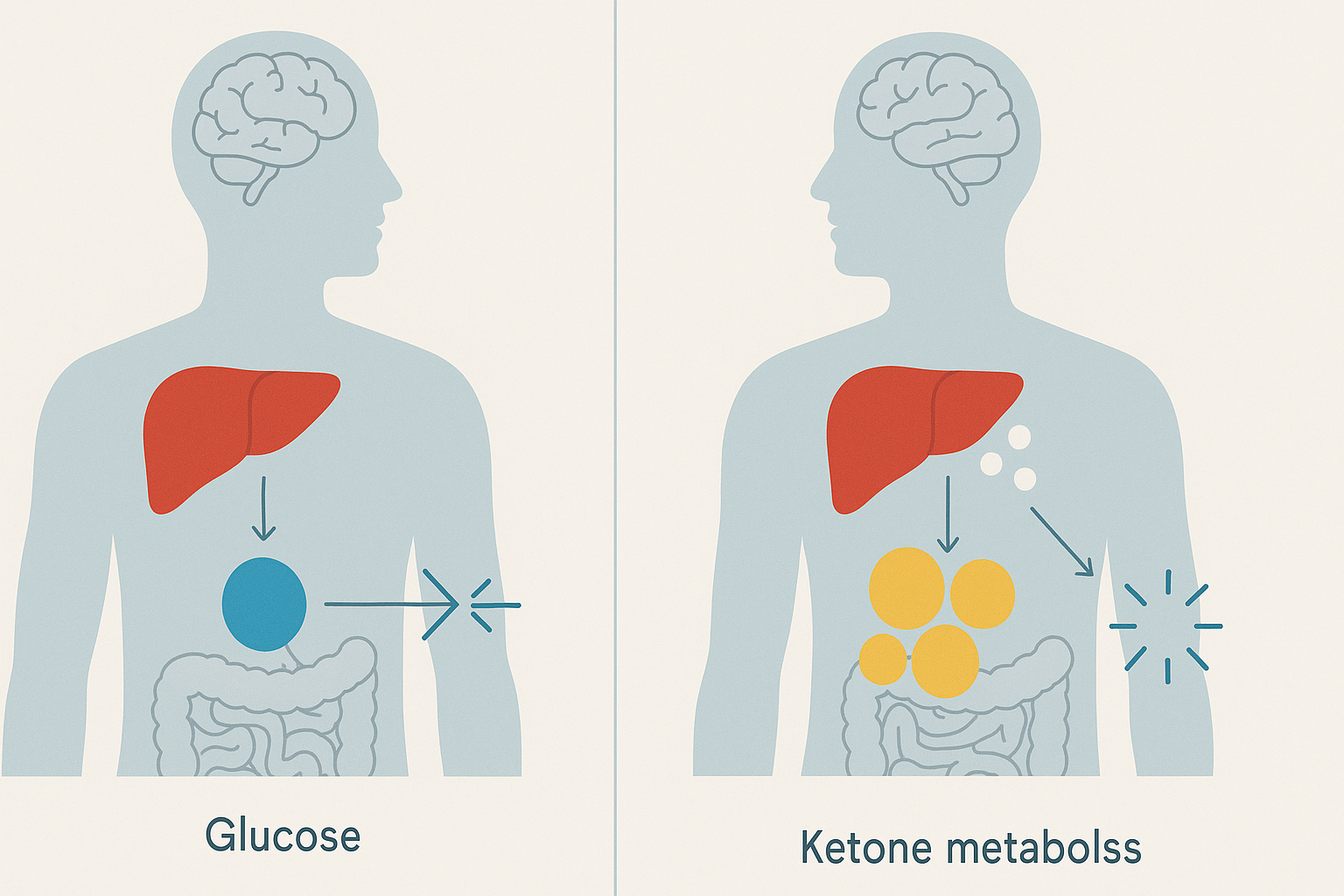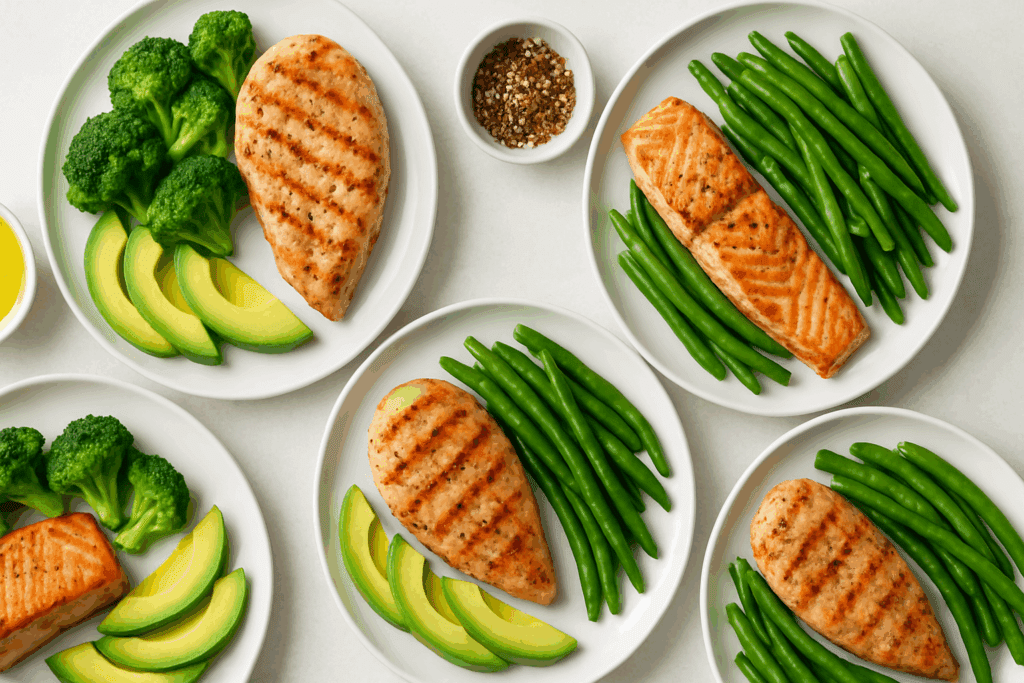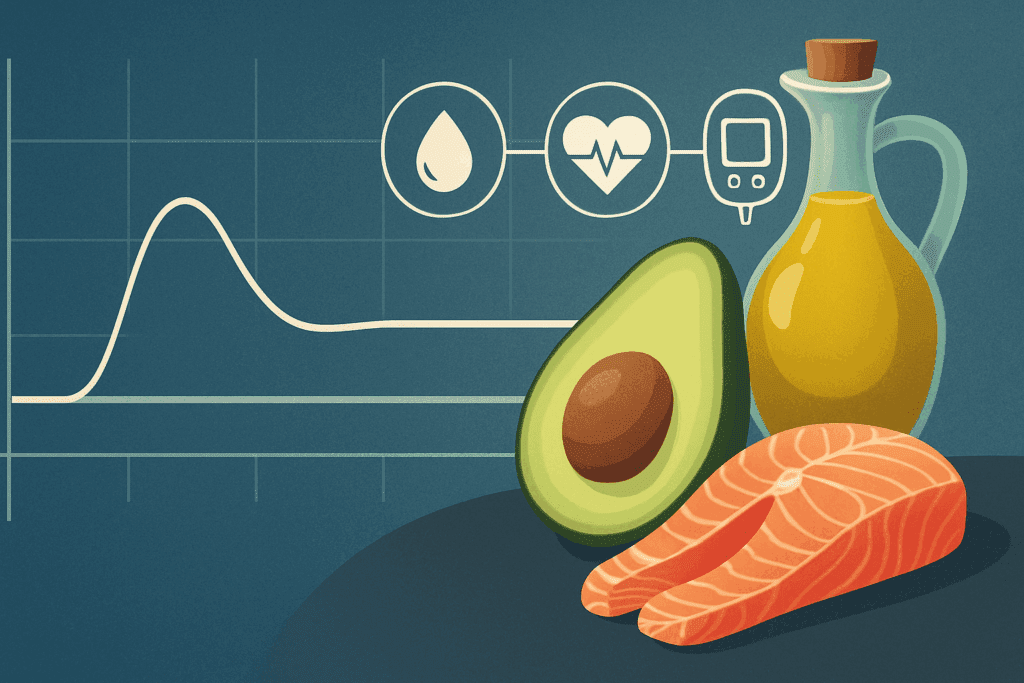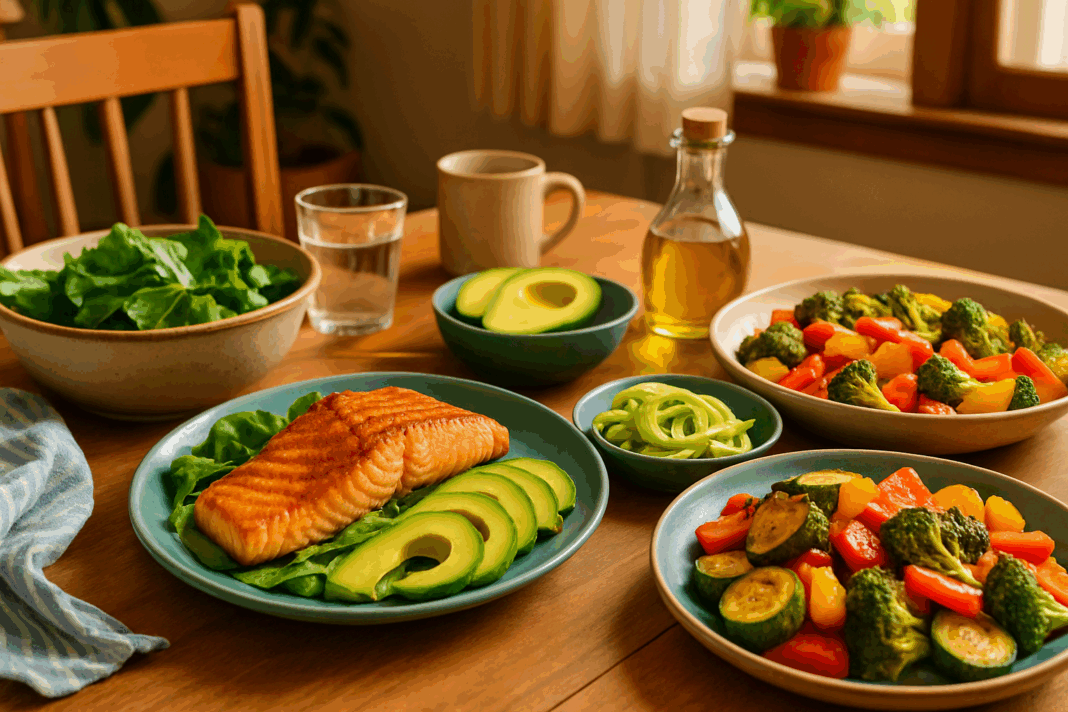For many individuals exploring the ketogenic diet, the promise of effective weight loss and better metabolic health is an exciting motivator. However, the perceived complexity of keto meal preparation often deters beginners from starting or sustaining the diet. This article aims to eliminate that barrier by presenting a comprehensive, medically accurate, and engaging guide to quick and easy keto dinner recipes. Grounded in expert nutrition insight, it is tailored not only for keto beginners but also for those seeking sustainable, doctor-approved strategies for weight loss through low carb keto recipes that are both enjoyable and effective.
You may also like: Is the Keto Diet Safe or Dangerous? What Experts Say About the Risks, Benefits, and Basics of the Ketogenic Diet

Understanding the Fundamentals of the Ketogenic Diet
The ketogenic diet, commonly referred to as “keto,” is a high-fat, moderate-protein, and low-carbohydrate dietary approach designed to shift the body’s primary fuel source from glucose to fat. This metabolic state, known as ketosis, occurs when carbohydrate intake is drastically reduced, prompting the liver to produce ketone bodies from fat as an alternative energy source. While initially developed in the 1920s as a treatment for epilepsy, the diet has garnered widespread popularity for its role in weight management and improving metabolic markers such as blood glucose and insulin sensitivity.
Experts emphasize that the success of a ketogenic lifestyle lies in its consistency, particularly during meal planning. Keto recipes for beginners must be not only low in carbohydrates but also nutrient-dense and balanced to prevent nutritional deficiencies. As carbohydrates are restricted to approximately 20 to 50 grams per day, every ingredient must count. Easy keto dinners must therefore combine efficiency with precision, ensuring they contribute to ketosis while meeting daily nutrient requirements. By focusing on whole foods, healthy fats, and lean proteins, beginners can enjoy flavorful, satisfying meals that align with their health goals.

Why Easy Keto Recipes Matter for Long-Term Success
One of the most commonly cited challenges in maintaining a ketogenic lifestyle is the perceived time commitment and complexity involved in meal preparation. For busy professionals, students, or parents juggling multiple responsibilities, the idea of spending hours in the kitchen each evening is impractical. This is where the value of easy keto recipes becomes most evident. These recipes are designed to minimize prep time and ingredient lists without sacrificing flavor or nutritional integrity.
Easy keto dinner recipes serve a dual function: they support adherence to the diet while also reducing stress and decision fatigue. In fact, behavioral nutrition research suggests that the more effort required to prepare a meal, the less likely individuals are to stick with a dietary regimen. By focusing on quick and easy keto dinner recipes that rely on pantry staples and minimal cooking skills, beginners are empowered to build a foundation of healthy eating habits. These meals are not only convenient but also a critical tool for weight loss success and metabolic consistency.
The Role of Doctors and Nutrition Experts in Supporting Keto Diets
As the popularity of ketogenic eating grows, so does the importance of expert guidance to ensure safety, sustainability, and effectiveness. Medical professionals and registered dietitians increasingly recognize the value of keto diets when applied correctly. They emphasize the importance of individualized plans, regular monitoring, and education on food choices. Keto recipes for weight loss must be both practical and aligned with evidence-based nutrition principles.
Doctor-approved ketogenic meal plans typically prioritize healthy fats such as avocado, olive oil, nuts, and fatty fish, while discouraging reliance on processed meats or artificial sweeteners. The best ketogenic recipes are those that integrate high-quality proteins with fibrous vegetables and nutrient-dense fats. These guidelines help prevent common pitfalls such as electrolyte imbalances, constipation, and fatigue, which often result from poorly planned keto meals. By following low carb keto recipes recommended by medical experts, individuals can maintain better energy levels, improve digestion, and reduce inflammation.
What Makes a Keto Recipe Effective for Weight Loss
Not all keto recipes are created equal, especially when weight loss is the goal. While the state of ketosis supports fat burning, the quality and composition of each meal also matter. Effective keto recipes for weight loss are designed to optimize satiety while minimizing unnecessary calories. Meals rich in fiber, protein, and healthy fats can curb appetite, reduce snacking, and promote better blood sugar control.
Free keto recipes that use whole, unprocessed ingredients can also improve micronutrient intake, a factor often overlooked in standard keto fare. For instance, incorporating leafy greens, cruciferous vegetables, and omega-3-rich fish can enhance the anti-inflammatory benefits of the diet. Additionally, portion control plays a significant role. Even on a keto diet, excessive calorie intake can stall weight loss progress. The best ketogenic recipes account for both macronutrient balance and caloric needs, ensuring a strategic approach to eating that promotes fat loss without muscle depletion or metabolic slowdown.

How to Build Easy Keto Dinners at Home
Creating easy keto dinners does not require culinary expertise or expensive ingredients. In fact, some of the most satisfying meals are built on simple combinations of protein, vegetables, and fat. A classic formula often recommended by nutritionists is the “P-V-F” approach: Protein, Veggie, and Fat. This formula ensures nutritional balance while keeping prep and cook times manageable.
For example, grilled chicken thighs paired with sautéed spinach in garlic butter and a side of avocado slices create a complete keto meal in under 20 minutes. Another easy keto dinner could involve pan-seared salmon served with roasted Brussels sprouts drizzled in olive oil and a lemon tahini dressing. These meals are not only flavorful but also provide a visual and textural variety that keeps dinner interesting. By mastering a few go-to templates, keto beginners can rotate ingredients based on seasonality, taste preferences, or dietary needs without straying from the principles of the diet.

Incorporating Low Carb Keto Recipes into Family Meals
One of the more challenging aspects of adopting a ketogenic lifestyle is balancing personal dietary goals with family preferences. Many individuals abandon keto diets because they feel isolated during mealtimes or struggle to find dishes that appeal to everyone. Fortunately, many low carb keto recipes are inherently adaptable and can be enjoyed by the whole family with minimal modification.
For instance, a keto-friendly beef and vegetable stir-fry can be served with cauliflower rice for the keto dieter and traditional jasmine rice for others. Similarly, taco night can be transformed with lettuce wraps instead of tortillas, allowing each person to build their meal according to preference. The key is to focus on meals that center around whole proteins and vegetables while offering optional carb-based sides for flexibility. By making these subtle adjustments, families can enjoy mealtimes together without compromising individual nutritional goals.

The Science Behind Quick and Easy Keto Dinner Recipes
From a nutritional science perspective, quick and easy keto dinner recipes offer more than convenience—they support metabolic regulation, hormone balance, and cognitive function. The reduced carbohydrate load in these meals prevents the postprandial spikes in blood glucose and insulin that are common after high-carb meals. This stability in blood sugar contributes not only to improved energy but also to reduced cravings and improved mental clarity.
Moreover, consuming high-fat meals in the evening may enhance satiety and reduce the likelihood of late-night snacking, a behavior often linked to weight gain. Studies have shown that meals rich in monounsaturated and polyunsaturated fats—found in olive oil, nuts, seeds, and fish—can improve lipid profiles and reduce markers of systemic inflammation. These health benefits are maximized when quick keto recipes emphasize whole foods and avoid ultra-processed products. With this in mind, meal timing and composition become essential components of a successful keto strategy.
Free Keto Recipes That Don’t Sacrifice Flavor
One of the greatest myths about ketogenic eating is that it’s bland or restrictive. On the contrary, free keto recipes are more diverse and flavorful than many expect. With creative use of herbs, spices, and healthy sauces, keto dinners can be gourmet without the need for sugar or starch. For instance, a creamy garlic parmesan zucchini noodle dish offers all the richness of pasta with none of the carbs. A keto-friendly coconut curry with chicken and cauliflower rice provides both heat and depth of flavor in a single skillet.
Incorporating international cuisines can also keep things exciting. Mediterranean-inspired grilled lamb with olives and feta, or Thai-inspired shrimp with peanut sauce over spiralized cucumbers, are examples of easy keto dinners that bring global flavors to the table. The key is learning how to substitute traditional high-carb ingredients with keto-approved alternatives—without compromising the essence of the dish. With proper seasoning and cooking techniques, keto meals can feel indulgent while staying within the parameters of the diet.

Tips for Beginners Trying Keto Recipes for the First Time
For individuals just starting their keto journey, the initial adjustment can feel daunting. But starting with keto recipes for beginners helps ease this transition by reducing complexity. These meals typically use familiar ingredients and straightforward instructions to build confidence in the kitchen. Instead of launching into elaborate recipes that require specialty flours or uncommon oils, beginners are better served by mastering staples like grilled proteins, roasted vegetables, and simple fat-based dressings.
Batch cooking is another effective strategy, allowing new keto dieters to prepare several meals at once, which reduces the temptation to reach for non-keto options during busy weekdays. Additionally, keeping keto-friendly snacks on hand, such as hard-boiled eggs, olives, or cheese sticks, supports the dietary shift by stabilizing hunger between meals. The goal during the first few weeks is to develop a rhythm and identify which foods are most satisfying and sustainable. As confidence grows, so can culinary creativity and experimentation with more complex dishes.
Making the Most of the Best Ketogenic Recipes for Weight Management
To truly benefit from the best ketogenic recipes, it’s important to approach meal planning with intention. While the term “keto-friendly” has become widespread, not all products or recipes marketed under this label align with nutritional best practices. Many processed keto items are high in saturated fats, artificial additives, or sugar alcohols that can cause digestive upset. Instead, the best ketogenic recipes use whole food ingredients and aim for balance across all macronutrients.
In the context of weight management, ketogenic meals that are high in protein and fiber-rich vegetables are particularly effective. These components increase satiety and thermogenesis, meaning the body uses more energy to digest the meal. When paired with moderate fat intake from sources like avocados, nuts, and olive oil, these meals support muscle retention and metabolic efficiency. Furthermore, staying hydrated and maintaining electrolyte balance—especially sodium, potassium, and magnesium—is essential for avoiding fatigue and ensuring long-term dietary success.
Frequently Asked Questions: Quick and Easy Keto Dinner Recipes Backed by Nutrition Experts
1. Can easy keto dinners help support mental clarity and cognitive performance? Absolutely. Easy keto dinners that prioritize healthy fats like olive oil, avocado, and fatty fish provide the brain with a steady source of ketones, which may enhance focus, memory, and mood stability. Unlike glucose, ketones are a more efficient fuel source for the brain, reducing oxidative stress and potentially improving cognitive resilience over time. While this benefit isn’t always immediate, consistent intake of nutrient-dense low carb keto recipes can support long-term neurological function. Many individuals report fewer energy crashes and more sustained mental performance when they follow easy keto dinner recipes as part of their evening routine. This is especially useful for professionals, students, or shift workers who rely on sustained focus into the evening.
2. Are there any psychological benefits to following a meal plan with easy keto recipes? Yes, and they often go underappreciated. Easy keto recipes offer predictability and structure, which can be mentally grounding in a busy lifestyle. For people dealing with decision fatigue, especially those managing multiple responsibilities, the ability to fall back on a few quick and easy keto dinner recipes reduces daily stress. Additionally, experiencing steady energy and fewer cravings through low carb keto recipes can boost mood and emotional stability. Over time, many individuals find that the empowerment of preparing a keto recipe that aligns with their goals can build confidence, which positively affects other areas of wellness.
3. What are some overlooked ingredients that enhance keto recipes for beginners? Fresh herbs, fermented vegetables, and umami-rich condiments like tamari or coconut aminos are frequently overlooked but can transform the flavor profile of a basic keto recipe. These ingredients introduce depth and complexity without adding carbs or compromising the ketogenic framework. For example, a splash of apple cider vinegar can brighten up easy keto dinners like roasted chicken with greens, while herbs like dill and tarragon can elevate egg-based dishes. Fermented vegetables like kimchi or sauerkraut not only add flavor but also support gut health, which is an essential part of overall wellness. By experimenting with these lesser-used additions, keto recipes for beginners can feel more exciting and sustainable.
4. How can people living in rural or food-insecure areas make use of free keto recipes? Access to ingredients can be a significant barrier, but many free keto recipes can be adapted to accommodate limited resources. Staples like canned tuna, frozen spinach, and eggs are often available even in remote locations and can form the base for nutritious and easy keto dinners. With creativity, even a keto recipe using pantry basics like olive oil, canned vegetables, and spices can support ketosis. It’s important to focus on adaptability rather than perfection. Organizations promoting food equity are also beginning to develop localized low carb keto recipes using affordable regional ingredients, helping underserved populations reap the benefits of ketogenic eating.
5. Are quick and easy keto dinner recipes sustainable in the long term? They can be, especially when variety and nutrient diversity are intentionally included. One of the keys to making quick and easy keto dinner recipes sustainable is rotating protein sources (like beef, poultry, fish, and plant-based options) and experimenting with different preparation methods. Incorporating seasonal vegetables, using different spices, and trying international influences can refresh your weekly menu and prevent food fatigue. Many of the best ketogenic recipes are adaptable to evolving dietary needs, such as gluten-free or dairy-free restrictions. When built into a lifestyle rather than approached as a short-term fix, easy keto recipes become not only sustainable but deeply enjoyable.
6. What are some advanced strategies for maximizing nutrient density in keto recipes for weight loss? One overlooked strategy is to emphasize organ meats, which are nutrient powerhouses often absent from modern diets. Incorporating small amounts of liver, heart, or kidney into easy keto dinners can significantly boost B vitamin, iron, and zinc levels. Another strategy is to use bone broth as a base for sauces and stews, enhancing both flavor and collagen content. Sprouting or fermenting low-carb vegetables before incorporating them into a keto recipe can also improve nutrient bioavailability. These advanced practices elevate keto recipes for weight loss from merely low-carb to therapeutically supportive meals that contribute to long-term metabolic and immune health.
7. How do social settings affect adherence to easy keto dinner recipes, and what are practical solutions? Social dynamics can present real challenges, particularly when eating out or attending events where carb-heavy meals are the norm. However, preparing and sharing easy keto dinner recipes at gatherings can normalize and even inspire others to explore keto-friendly options. For example, bringing a keto-friendly casserole or dip to a potluck often sparks curiosity. Planning ahead by checking menus or eating a quick and easy keto dinner before going out can also reduce the temptation to stray. Online communities offer peer support and recipe swaps that provide accountability and practical tips, helping users stay committed to their keto goals even when navigating complex social environments.
8. What innovations are emerging in the field of easy keto recipes and keto meal prep? The intersection of technology and nutrition is creating exciting developments for keto meal planning. Apps now offer customized weekly plans featuring only quick and easy keto dinner recipes, auto-generated shopping lists, and macro tracking. Smart kitchen appliances like multi-cookers and air fryers make it even easier to prepare low carb keto recipes in record time with minimal cleanup. Moreover, the rise of AI-powered nutrition platforms is allowing users to receive doctor-aligned, free keto recipes based on lab results and metabolic profiles. As the field matures, expect more integration of biotech and culinary tools aimed at personalizing and streamlining the keto experience.
9. Can a keto recipe be adapted for intermittent fasting protocols? Yes, and this pairing can be highly synergistic. Many keto recipes for beginners are naturally suited to the eating windows common in intermittent fasting routines. The high fat and protein content of the best ketogenic recipes promotes satiety, making it easier to extend fasting periods without feeling deprived. When planning meals, it’s helpful to create easy keto dinners that are calorie-dense and nutrient-rich to ensure that the eating window is maximally nourishing. For those new to fasting, breaking the fast with low carb keto recipes that are gentle on digestion, like broth-based soups or lightly cooked vegetables with fat, can improve the experience and effectiveness of the approach.
10. How do emotional eating habits impact success with keto recipes for weight loss? Emotional eating can undermine even the most well-structured diet plan, but awareness and strategy can mitigate its effects. Many people reach for comfort foods during stress, boredom, or anxiety, and if keto recipes are not designed to be emotionally satisfying, adherence can wane. Incorporating textures and flavors that evoke comfort—such as creamy sauces, warm spices, or crunchy elements—into easy keto dinners can help fulfill these emotional needs without compromising ketosis. Creating rituals around meal preparation, such as cooking to music or enjoying dinner without distractions, can also reduce mindless eating. Ultimately, success with keto recipes for weight loss often hinges on addressing the emotional as well as nutritional aspects of food.
Conclusion: Creating a Sustainable Lifestyle with Quick and Easy Keto Dinner Recipes
Incorporating quick and easy keto dinner recipes into your daily routine is more than a strategy for weight loss—it is a gateway to improved health, greater energy, and more mindful eating. For beginners, this journey may start with simple dishes that prioritize quality ingredients and gradually evolve into a diverse and flavorful ketogenic repertoire. By leaning on keto recipes for beginners, integrating low carb keto recipes into family meals, and choosing doctor-approved meals that support long-term goals, individuals can craft a lifestyle that is both satisfying and sustainable.
The best ketogenic recipes are those that nourish the body while fitting seamlessly into busy schedules. They are rooted in science, endorsed by experts, and tailored to real-world needs. Whether your goal is metabolic health, fat loss, or simply more mindful eating, easy keto dinners provide a delicious and practical solution. With the wealth of free keto recipes available today, there’s never been a better time to embrace this transformative approach to nutrition.
Further Reading:
61 Keto Dinner Recipes That Are Familiar, Tasty, And Easy To Make
57 Easy Keto Dinner Recipes Everyone In The Family Will Love


